Interview – Ottolinger
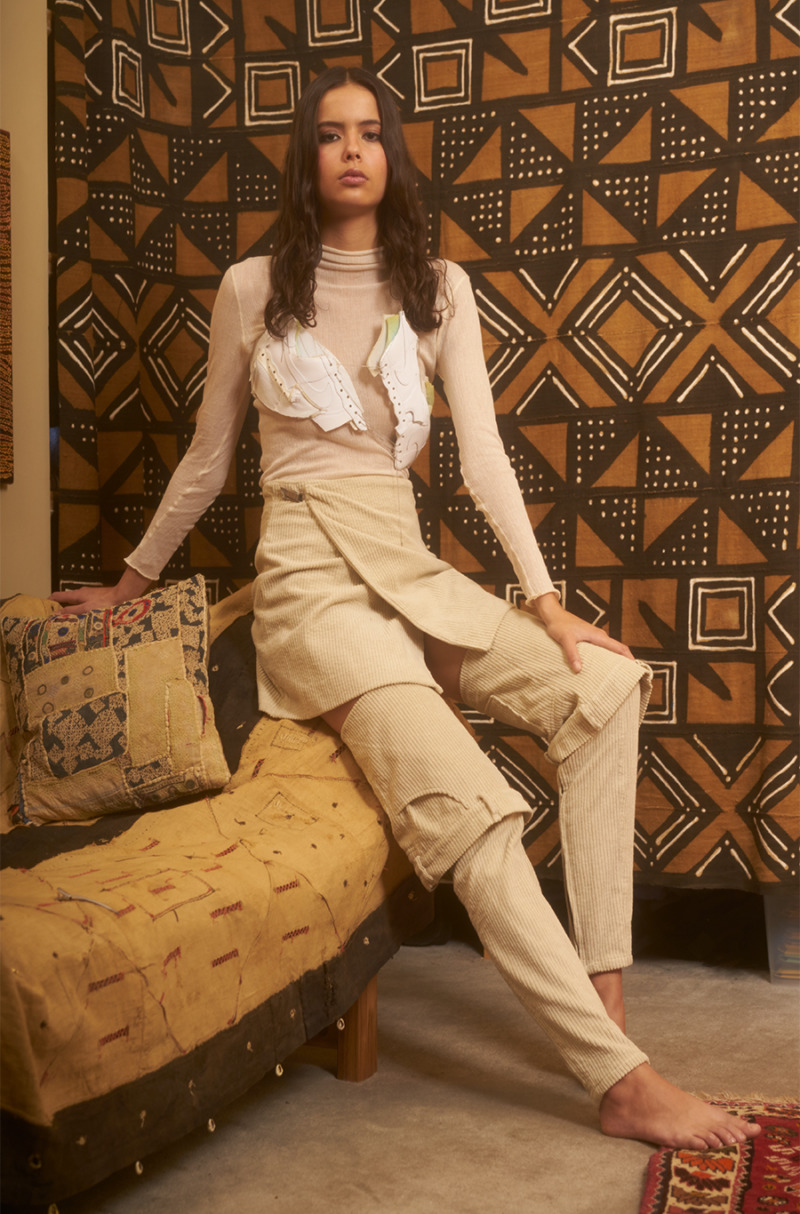
Being a duo comes with disagreements, challenges and misunderstandings, of course, but most of the time we can challenge, support, surprise and push each other, and this is very precious.
Deconstructed then reconstructed is a term most commonly associated with the punk movement of the seventies and later the avant-garde aesthetic of Martin Margiela, but the duo behind Ottolinger are bringing this rebellious approach to design back to the fore. Championing an undone aesthetic, which, whilst DIY in appearance is actually the result of meticulous trial and error, the designers are quite literally ripping, burning and unravelling the rulebook.
Christa Bösch and Cosima Gadient met at The Institute of Fashion Design in Basel, both hailing from Switzerland – subtle signifiers of their roots can be spotted in their use of edelweiss flower fabric – the label has shown at both New York and Paris Fashion Week, while their studio is based in Berlin. Unsurprisingly, travel serves as inspiration for the pair, who have recently been nominated for the prestigious LVMH Prize.
Experimenting with the concept of couture and challenging its traditional signifiers, lighter fluid, blow torches and acid are the tools of choice when it comes to the crowning touches of an expertly crafted garment. The duo is daring in their design process. A satin slip dress arrives spliced to the thigh, raw hems skirt across the body while scorched circles reveal slithers of skin. Bespoke, yes, but not in the expected couture sense. The head creatives for YEEZY Season 4, an off-kilter approach to styling has seeped into their own line, which sees tattered-hem skirts layered over trousers and a make-and-mend approach across collections.
In keeping with the marriage of contrasts, which acts as one of the few recognisable tropes of the label, Ottolinger’s latest collection for AW18 was rife with contradictory features. Following the label’s decision to shoot their SS18 lookbook against the snowy Swiss Alps – not far from where one half of the duo grew up – the latest collection celebrated the unusual pairings that fans of the brand have come to expect. Tactile fabrics were set against cool, shiny PVC while picnic blanket gingham arrived spliced with sporty sweater sleeves.
With the theme of unions in mind, we reached out to the designers to discuss the pitfalls of working as a pair and the dynamic of designing as a duo when inspiration stems from your own personal style.
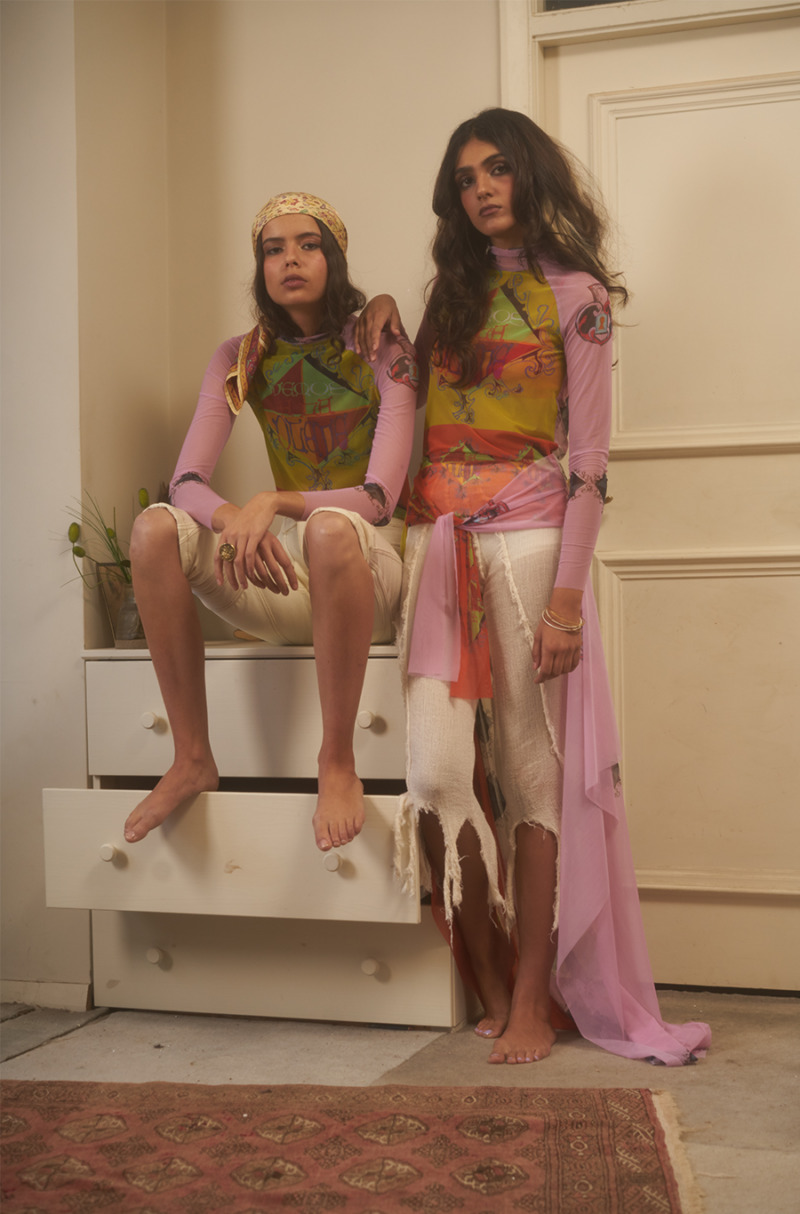
Was working as a duo something that had always interested you?
It happened very naturally to us. We became friends first before, then decided to start working together. We shared a similar approach to a lot of things, so we never really asked ourselves that question.
Ottolinger’s visual identity is based around what you would both wear, is this something you always agree on?
It’s certainly guiding most of our decisions in the design process, but our personal style and interests are still different enough from each other to add some complexity to that. In the end, it’s always the combination of the two of us that ends up in the work.
Your pieces are created with expert skill – and then finished in a way that some might see as damaging; have you ever accidentally destroyed a garment?
Our practice involves a lot of trial and error, a lot of editing and re-arranging. We might break certain rules or do it our own way, but we know very clearly what we are working on and developed these techniques over time. So we don’t look at it as damaging. It’s rather the interest in finding new textures and using material in unexpected ways. There is a friction being produced when things collide that are not meant to go together. It has a beauty of its own and we like that.
You’ve discussed how instinct and intuition are guiding design principles for you both; how do you navigate this when your ideas don’t marry with one another’s?
The fact that we are two designers is challenging in many ways, but it makes our work a constant dialogue, which is just very fruitful in the end. This constant process of both expanding and refining our vocabulary involves discussing and reflecting on what we are doing every day.
What thoughts go through your mind when you’re blowtorching a perfectly constructed piece or dripping acid across a deconstructed design?
We constantly try to establish our own language, and often this is by taking risks. This can go terribly wrong too of course although a lot of people use the word punk to describe our working methods, it’s all been done with very much precision and care and we know exactly what we’re doing.
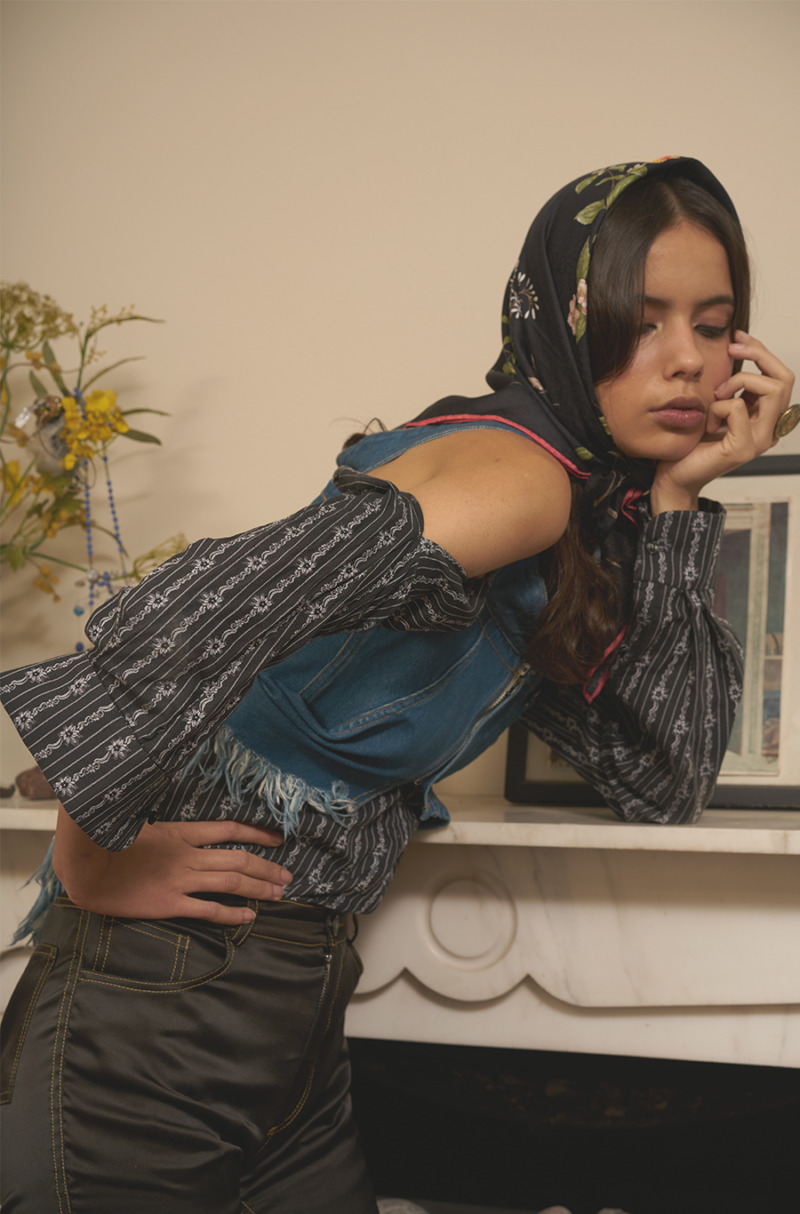
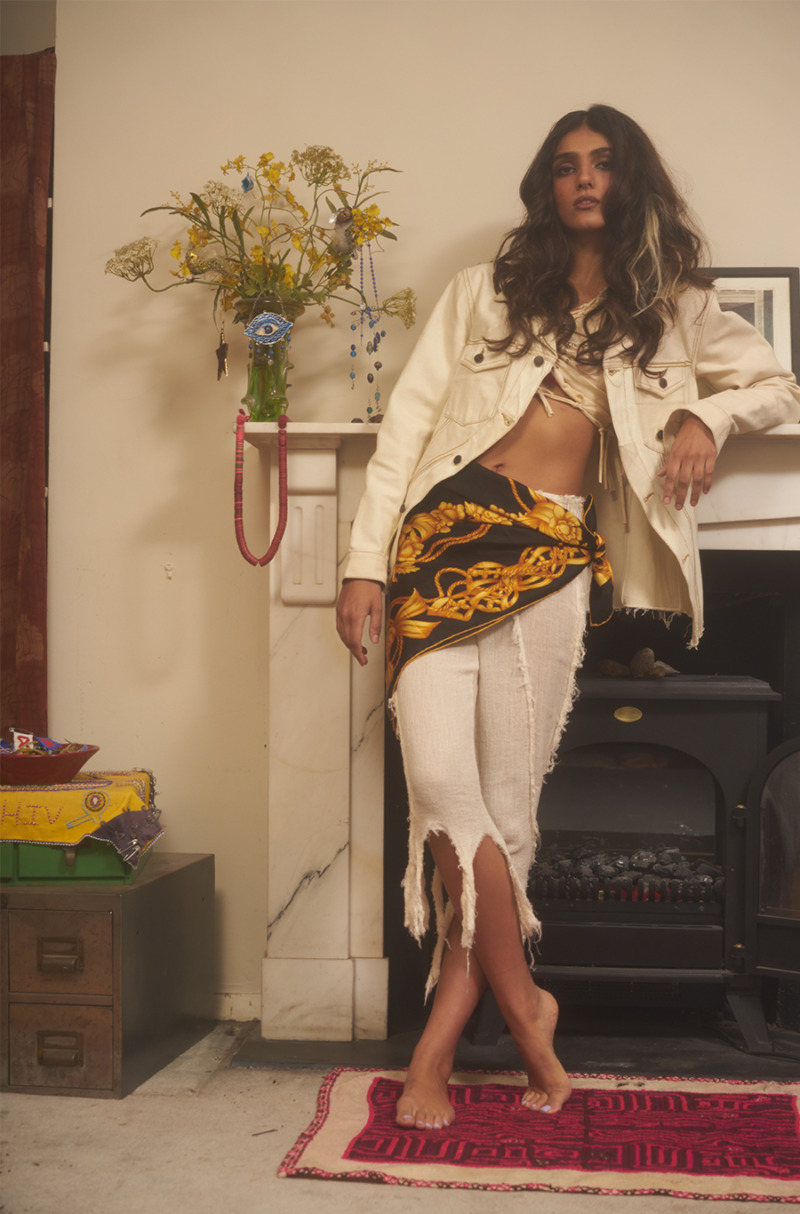
We like to play with the word ‘couture’ and challenge the luxury fashion’s status quo. We like to question certain things, challenge certain rules or expectations of how things have to be done or look. For something to be chic and sexy, it doesn’t necessarily have to be ‘pretty’.
What are the unexpected upsides of a working relationship?
Being a duo comes with disagreements, challenges and misunderstandings of course, but most of the time we can challenge, support, surprise and push each other, and this is very precious.
How would you describe your relationship to the brand? Some design duos regard themselves as single entities, while others report a parental feeling over a brand; which, if either, would be true for you?
Our brand and team is still very small, we are hands-on in basically everything. For us, there is no other way of doing this than being an entity at this point.
Ottolinger seems to strive off contradictions – couture quality versus destructive details, deconstruction/reconstruction – what would you say are your most contradictory qualities and how does this manifest in your design process?
Connecting and combining contradicting elements is something that can bring wonderful and unexpected results. It became very much part of our basic creative thinking. We are interested in this unlikely harmony.
There are certain references, such as early aughts denim and your Swiss childhoods that seep into your designs but inspiration seems a little covert and difficult to decipher – is this a conscious decision on your part? And if so, why?
When we start working on a collection we might have very clear references, but through the process of developing these ideas and constantly rethinking and reworking them, this probably gets more and more converted. But it’s not a conscious decision, it happens through the creative process of editing and rethinking things.
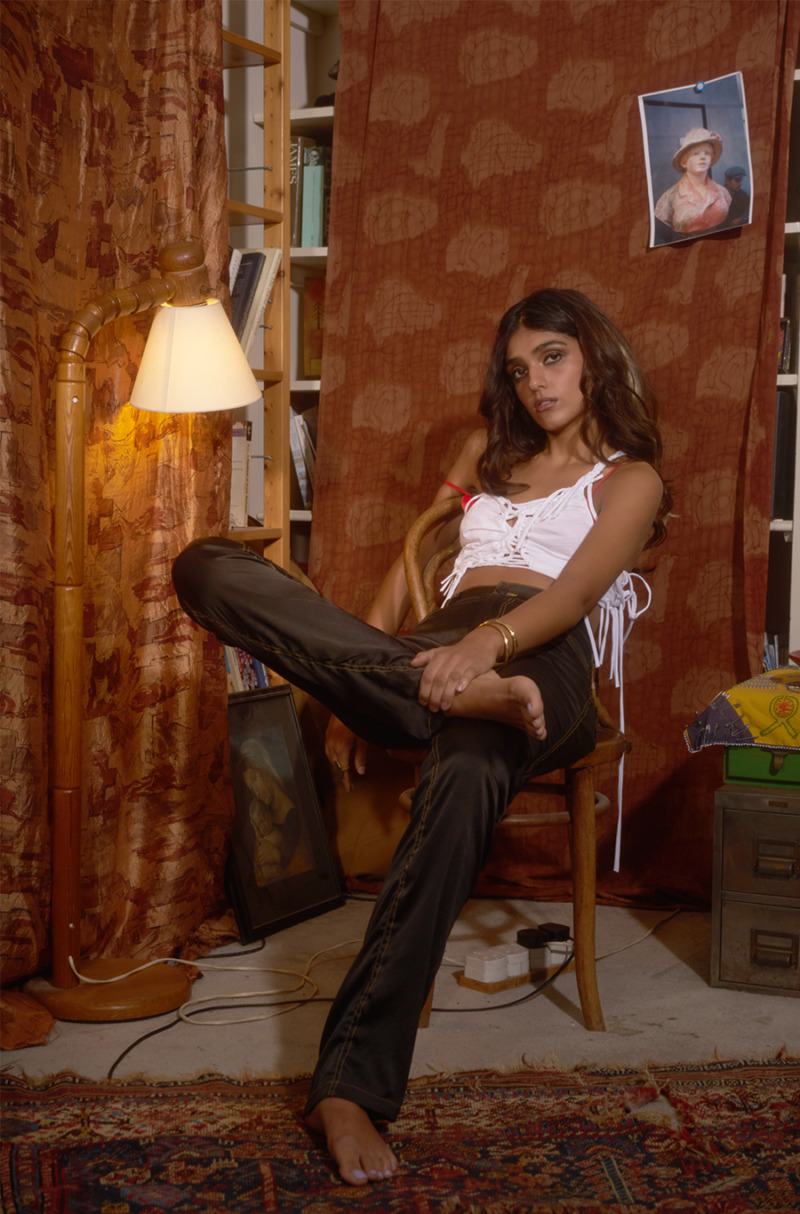
Aside from a punk sensibility and fearless experimentation, what recurrent influences do you both share?
It’s a constant process of both expanding and refining our vocabulary. This involves a search for new references every day. We like to play with the word ‘couture’ and challenge the luxury fashion’s status quo. We like to question certain things, challenge certain rules or expectations of how things have to be done or look. For something to be chic and sexy, it doesn’t necessarily have to be ‘pretty’.
Photographer: Raphael Bliss
Photographer Assistant: Harry Mitchell
Stylist: Shirley Amartey
Stylist Assistant: Kat Silva
MUA: Ksenia Galina
Hair: Jackson Acton
Models: Kiran Kandola @ Storm and Sarah H @ Elite
